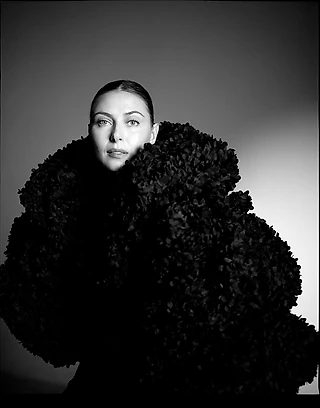Большой Бубба и другие ракетки-нелегалы
Большой Бубба и другие ракетки-нелегалы
Ричард Пальяро
Tennis.com 04/16/2010
Выпускаются ли ракетки, запрещенные для игры в Лиге Американской теннисной ассоциации? Недавно я видела на корте мужчину с ракеткой, у которой размер обода был в половину его самого. Выястилось, что ракетка называлась «Вид» («Weed” – сорняк, а также сигарета с марихуаной), и мне интересно узнать, каков максимальный разрешенный размер ракетки – Елайне Кейзи.
Хороший вопрос, Елайне, потому что он касается долгой полемики в теннисе, и предшествует саморазрушению Дженфер Каприати, вы–зловоние-мира–тирадам Макинроя и антидопинговым программам.
Началось все в 1975 году, когда Принс выпустил ракетку с большим ободом, что породило дебаты о том, не разрушит ли технология ракеток саму игру.
В центре бури находилась Международная федерация тенниса, руководящий орган игры, определяющий какой спортивный инвентарь разрешить, а какой считать «не соответствующим» для проведения соревнований, включая Лигу Американской теннисной ассоциации.
Мы счастливы сообщить, что в результате проведенного расследования ракеток, выпускаемых сейчас, запрещенных не обнаружено, по крайней мере для для дюжины брендов, пользующихся высокой репутацией. Даже Вид, о котором вы упоминули, является легальным, несмотря на огромную струнную поверхность площадью 135 квадратных дюймов, примерно на 25% больше того, что считается сейчас нормой.
На самом деле Вид довольно далек от предела, разрешенного правилами ИТФ.
Можно растянуть головку до 178 кв. дюймов, примерно как у головы слоненка. Чтобы достичь этого размера, все продольные струны должны иметь длину 15.5 дюймов, а поперечные – 11.5 дюймов.
В результате получится прямоугольник, как у «гнусной машины» Бо Дидли, электрогитары на стероидах.
Другой проблемой является то, что ИТФ может запретить такую ракетку уже после того, как фирма потратит кучу баксов на исследования и разработку, производство и маркетинг, потому что спортивный руководящий орган не исследует ракеток, вызывающих подозрение, до того как они появятся на рынке. Деннис О’Рейли, владеющий маленькой компанией Колумбус (штат Огайо), которая производит Вид, говорит, что у него есть прототипы моделей с площадью обода до 150 кв. дюймов, «однако я боюсь их выпускать из опасения, что ИТФ может изменить правила на размер головки и я буду вышвырнут из бизнеса».
Некоторые компании идут на этот риск и проходят проверку ИТФ.
Вот парочка примечательных, которым удалось выжить: странно-непонятная ракетка Blackburne, у которой раздельные струнные поверхности для форхенда и бэкхенда, и “Natural”, двуручная ракетка, которая выглядит как «волшебная лоза» для поиска руд. Обе разрешены.
Но других свели в могилу.
Вот краткая история ракеток, которые запретила ИТФ с тех пор, как утвердила свои правила на спортивный инвентарь в 1978 году:
1978 год, ракетка Вернера Фишера: ракетка Werner Fischer имела три поверхности из не пересекающихся струн с пятью или шестью поперечными струнами сверху, что выглядело как тарелка со спагетти. Эта комбинация придавала такое вращение мячу, что попасть по нему после удара ракеткой Вернер Фишер было труднее, чем по тарелке Фрисби. ИТФ запретила «спагетти-ракетку» через год после выпуска.
1982 год. Ракетка Дайнаспот с подвижной массой (Dynaspot Movable Mass Racquet): внутри обода находилась свободно текущая жидкость, которая могла изменять распределение веса во время игры. Она могла менять баланс от ручки к головке при средней силе замаха. Интересно, что в модели 1995 года, Pro Kennex “Kinetic” применялась аналогичная технология, но вместо жидкости ипользовали дробь для воздушного пистолета. Это было признано легальным.
1997 год. Хед TI S7: Самые длинные продольные струны превышали по длине разрешенные ИТФ 15.5 дюймов.
2000 год. Большой Бубба (The Big Bubba ) и Max Superlong +2.25 Данлопа: во время бума на длинные ракетки в конце 1990-х Данлоп увеличил длину ракетки Суперлонг до 29.25 дюймов. Гамма пошла даже дальше, поскольку ИТФ разрешал в то время 32 дюйма. Но парочка ракетомонстров напугала боссов ИТФ, которые опасались, что ракетки будут настолько мощными, что сведут игру к надоедливому соперничеству быстрой подачи и ударов навылет. «Мы не хотим, чтобы все игроки теннисных клубов подавали как (Марк) Филиппусис, когда невозможно принять мяч», признался президент ИТФ Бриан Робин, ссылаясь на “подачи-ракеты” “Скада” (прозвище Филиппусиса). «Мы считаем, что (мы) правы, но мы не можем этого доказать». ИТФ решила уменьшить максимальную длину ракеток до 29 дюймов для любителей с 1997 года и с 2000 года для профессионалов. ( Данлоп прекратил выпуск Max Superlong, но Гамма переделала Буббу под разрешенный размер).
Но отсутствие каких-либо прямых доказательств того, что Суперлонг чересчур мощный, привело в 1997 году журнал ТEННИС (TENNIS ) к выполнению своих собственных испытаний, вооружив Скада запрещенным Макс Суперлонгом и обычной стандартной 27 дюймовой ракеткой. Максимальная скорость была одинаковая (127 миль в час), но точность у Филиппусиса с использованием Суперлонга возросла с 52 до 80 процентов. Тестирование на теннисистах любителях дало аналогичные результаты. Наше заключение: Более длинные ракетки улучшают точность подачи, что может смягчить наиболее занудливые моменты в теннисе – бесполезную трату времени между первой и второй подачами.
Мы поняли, что заявление ИТФ о том, что «подачу делают ракетки» свелось к тривиальной ориентировке на теннисистов типа Филиппусиса и годам тренировок, которые позволили ему приобрести подачу-“скад”.
Многие читатели согласились с нами. Но не ИТФ. Правило 29 дюймов все еще в силе.
Вот как выглядели ракетки, о которых шла речь в статье:

Большое спасибо, cermatle!
Добавляю и эту статью по предложению SimpleSimon Он нашел ее и мне кажется что всем будет интересно:
The famous Vilsbiburger Tennis Racquet, invented by Werner Fischer (GER):
One of the greatest inventions in tennis history
With regard to highly collectible racquets of the 70s, one certainly has to pick out the famous Vilsbiburger tennis racquet with double-stringing (“spaghetti strings”). This unusual stringing system, invented by Bavarian Werner Fischer and released to the market in 1976, produced an incredible, erratic topspin and overnight enabled weak players to beat stronger players. It took Werner Fischer, a horticultural engineer in his main profession, four years to develop the Vilsbiburger double-stringing system that had vertical strings graduating from 9 to 12 kp and horizontal strings mostly 20 and 22 kp - very soft. After its introduction, it quickly gained ground in Bavaria, played by Fischer himself and most of his colleagues from the TC Vilsbiburg mens tennis team. By means of their Vilsbiburger racquets, Fischer and his friends suddenly rose to big success, becoming Bavarian team tennis champion in June 1977 and then promoting to the German Tennisbundesliga, the highest team tennis division in Germany, in September 1977. Another player of the TC Vilsbiburg mens tennis team, Erwin Müller, achieved the biggest success with a Vilsbiburger racquet in 1976 and 1977. He managed to beat a range of well-known, clearly higher ranked German players such as Frank Gebert, Werner Zirngibl and Peter Elter. As a single player, Müller also won a German tournament with a Vilsbiburger racquet in June 1976 and reached the semifinals of the National German Tennis Championships in 1977. At the same tournament, Bavarian Ameli Ring (TC Dachau), using a Völkl Zebra with Vilsbiburger strings, sensationally reached the ladies finals, but lost to Helga Masthoff.
Big media interest and flourishing business
The Vilsbiburger racquet attracted a lot of both national and international media interest and quickly grabbed the headlines in newspapers and magazines. Fischer′s invention naturally encountered ambivalent reactions. In Germany, racquets with Vilsbiburger strings were given a lot of deprecative nicknames such as "Fliegenklatsche", "Vilsbiburger Keule", "Softpatsche", "Fischerpatsche" or "Matratze", but partly also admiring nicknames such as "Wunderwaffe" or "Wunderschläger". In November 1976, Werner Fischer even was invited to the "ZDF Sportstudio", a very popular sport programme of German television, and after that screen appearance was hardly able to cope with the flood of enquiries coming from tennis playing German TV watchers. For preparing a racquet with Vilsbiburger strings, Fischer charged his customers between 120 and 150 DM (about 60-75 Euros). Definitely not a steep price, considering the fact that Fischer spent three working hours on stringing one single racquet. "It was extreme manual labour", Fischer says. But he meanwhile had hired some employees who supported him. Also in November 1976, Fischer attended the Cologne Grand Prix tournament, trying to introduce his Vilsbiburger system to Top Ten players such as Jimmy Connors or Harold Solomon. But straight-hitting Connors, holding a Vilsbiburger racquet in his hands, only said something like "That′s not my cup of tea" and passed the racquet on to Harold Solomon, well-known for his heavy topspin strokes - potentially a much better candidate for the Vilsbiburger racquet than Connors. However, Solomon checked the racquet and told Fischer that he had already played with a similar racquet in the past, allegedly having encountered an arm injury as a consequence. So Fischer drove back to Bavaria without having been able to convince the world elite of his stringing system.
Vilas, Nastase and the ban
It was obvious that prominent, established tennis professionals - after having lost to a nobody with a Vilsbiburger racquet - most heavily complained about that revolutionary racquet. But also the Association of German Tennis Teachers and some physicians advised against it. Calls for a ban of the Vilsbiburger stringing system became louder and louder, but the ITF (International Tennis Federation), after having discussed the topic at a conference in London in July 1977, decided to keep it legal. But that liberal view upon the Vilsbiburger racquet shouldn′t last too long - in early October, there was an episode that made the ITF think differently about the "Wunderwaffe": When Argentine superstar Guillermo Vilas met Ilie Nastase in the best of five set final of the Aix-en-Provence tournament in early October 1977, he dropped the first two sets by 6–1, 7–5 and then retired in protest of Nastase′s use of the Vilsbiburger racquet! Thus Nastase snapped Vilas′ world record 53-match winning streak on clay courts which stood until the record was broken by Rafael Nadal in 2006. “It was really the racket,” Vilas said. “I didn’t lose against a player, I lost against a racket.” He and his coach Ion Tiriac then used their big influence on the ITF, causing it to ban the Vilsbiburger racquet at the end of October 1977. What is remarkable: While condemning the racquet in public, Vilas did use the racquet himself, not officially, but during training sessions. His trainer and manager Ion Tiriac said: "Guillermo simply is unbeatable with the double-stringing system in his training matches!".....
Werner Fischer himself had prepared Nastase′s Head Aluminium racquet with Vilsbiburger strings and personally brought the racquet to Aix-en-Provence by car, handing the racquet out to Nastase. The Romanian did play a Vilsbiburger racquet, although ONE WEEK before the Aix-en-Provence tournament, in an interview with German "Tennis Magazin" he had declared that he would never play with such a racquet, even saying that would be "beneath his dignity"! But Nastase more than quickly changed his mind, upsetting Vilas with the Vilsbiburger racquet. One must know: At the French Open 1977, Nastase had lost to George Goven - a Frenchman who used a Vilsbiburger racquet, too... Goven also made it into the semifinals of the Aix-en-Provence tournament, along with Vilas, Nastase and Eric Deblicker, who also played a Vilsbiburger racquet, so that three of the four semifinalists played with a Vilsbiburger! Deblicker lost to Vilas in a very close five set match.
When the ban on the Vilsbiburger stringing system came at the end of October 1977, Fischer had prepared about 2,000 racquets with Vilsbiburger strings. "If the ban had come one year later, I would have become a millionaire, but instead, I was financially ruined". Fischer had applied for several patents in order to prevent his invention from getting copied by other manufacturers, but these were investments that should not pay off in the end. After his double-stringing system, Fischer developed a few more stringing systems that, according to him, were even better than the Vilsbiburger system. But the ITF always changed its regulations so that all his inventions quickly became forbidden.
The ban - a case of conspiracy?
Tragically, the ban of the Vilsbiburger stringing system was a case of fraud and conspiracy obviously. On behalf of the ITF, the German Tennis Federation (DTB) had enquired an expert opinion from the Technical University of Braunschweig (Germany), and that expertise deciced in favour of the Vilsbiburger system. But nevertheless, the ITF voted against it afterwards. One year later, Fischer got a hint that the ITF had received a faked expertise. Later on, there was a court trial in the USA that confirmed the existence of two different expertises - original and fake. But for Fischer, that finding unfortunately came too late - "At that point of time, I already was a has-been", Fischer said. He supposed that the Association of German Tennis Teachers was responsible for the fake.
The legend lives on
Today, the Vilsbiburger legend lives on. Fischer′s invention has constituted a unique chapter of tennis history, his double-stringing system is another great example of German inventiveness and innovative strength in the tennis industry. Werner Fischer also cooperated with another well-known German inventor who revolutionised the racquet industry: Siegfried Kuebler. Kuebler manufactured the "Original Werner Fischer" frames for Fischer, a metal racquet that had been derived from Kuebler′s "Plus 20" racquet. But Fischer and Kuebler didn′t team up for a long time - the ban on Vilsbiburger strings inevitably led to the end of the cooperation.


















Активная история ракетки Фишера продолжалась 5 месяцев: с мая 1977 по 3 октября 1977 года, даты временного запрета на эту ракетку, после чего предполагалось подробно изучить саму ракетку, прежде чем сделать окончательные выводы. Временный запрет стал постоянным в следующем году. Изучение ракетки было поручено Немецкому техническому университету. Конкретные результаты исследования, написанного на 30 страницах, найти не удалось. Но университетские ученые дали рекомендацию о том, что ракетка может изменить характер игры в теннис и приведет к длительному обмену ударами на задней линии.
» the racket limits the game as we now know it to a long-rally base-line situation, which changes the character, if not the spirit, of tennis». И ITF согласилась с этим. По иронии судьбы через несколько лет характер теннисной игры радикально изменился в прямо противоположном направлении и стал доминировать стиль serve-volley, который как считалось в 90-х должен вскоре угробить теннис. Но история опять пошла не так, как предсказывали пандиты и современный теннис стал комбинационным, в значительной степени благодаря сильному спину мяча, причем существенную роль в этом играли новые полиэстерные струны, усиливающие спин на 10-20% ( ракетка Фишера усиливала его на 30 -60%, а теоретически могла до 100)%
Гнусность ситуации заключалась еще и в том, что временный запрет ITF на ракетку вступал в силу 3 октября, а финальный матч Настасе-Вилас второстепенного турнира во Франции был 2 октября ( или 1, точно не помню). И особого смысла играть ракеткой не было. Но можно было прервать безпроигрышную серию побед Виласа. Что Настасе и сделал в присущем ему стиле, вывев из себя Виласа, который демонстративно отказался продолжать игру
После матча Вилас сказал, что-то вроде (точно сейчас не помню): «Да, была ракетка, но был и Настасе. Все вместе было для меня чересчур много»
Кроме того, она была ненадежна, «спагетти» вставки часто вылетали во время игры. И во время ударов она издавала довольно громкие звуки. По рассказам игравших, «создавалось впечатление, что играешь абажуром».
Т.е. Ракетка Фишера была вовсе не идеальной и давала преимущество только когда соперник еще не приспособился. Запрет был необоснован
Еще одна ирония в том, что после злополучного матча Настасе-Вилас, бывший парный партнер Настаси и менеджер Виласа Ион Цирьяк (Ion Țiriac), тот самый, который с синей глиной в Мадриде:), поднял огромную волну истерии вокруг ракетки Фишера и сыграл не последнюю роль в удушении. Так что в гробу спагетти-натяжки есть и парочка хороших румынских гвоздей.
1. Теннисист-любитель Говард Хед изобрел ракетку с большим ободом и подал заявку на патент. Дело продвигалось трудно, потому что подобное уже было. Тогда он попросил Говарда Броди, профессора физики, помочь ему. Тот помог и доказал, что преимущество конструкции Хеда в том, что она увеличивает полярный момент инерции ракетки и тем самым расширяет приятное пятно (sweet spot). До этого физической основы ракеткостроения не было, после этого она появилась, ну остальное уже следствие, фактически Хед увеличил ширину ракетки на один дюйм и это изменило очень многое, такая мини-революция.
2. Садовник Вернер Фишер изобрел революционную струнную натяжку фактически на интуитивной основе. Эта натяжка позволяла закручивать мяч с максимально возможной эффективностью. Фактически это был фрикционный редуктор. Физической модели, как работает эта натяжка на тот момент не существовало, она появилась через 30 лет, когда спагетти-ракетка покоилась в гробу. Современные скользкие лавсановые струны закручивают мяч по той же физической модели, но гораздо слабее.
Натяжка спагетти была более значимым изобретением, чем большеголовая ракетка Хеда, но опередила свое время и попала под раздачу, ей сильно не повезло, а потом ITF монополизировала права на конструкцию ракеток.
Что было бы, если бы ей повезло? Трудно сказать, потому что это сослагательное наклонение.
Но скорее всего теннисные матчи уровня Федерер-Джокович на Ролан Гарросе этого года были бы типичными. Конечно конструкция ракетки и наряжка отличались бы от первоначальной фишеровской, но скорее всего взяли бы от нее лучшее. Разумеется, это имхо.
Сейчас выпускаются аналогичные ракетки, например с натяжкой Бодена:
http://www.odysseymfg.com/EZ_Spin.html
Ими разумеется можно играть, но не на соревнованиях.
http://www.physics.usyd.edu.au/~cross/SPAGHETTI%20STRUNG%20RACQUETS.htm
Перевод был на этом блоге. Или можно посмотреть на wtatour.ru.
Более-менее подробная история ракетки и ее запрета опубликована в Sport Illustrated в 1978 году:
http://sportsillustrated.cnn.com/vault/article/magazine/MAG1093486/index.htm
Видео отрывки знаменитого скандального матча 1977 года между Илие Настасе и Гильермо Виласом можно посмотреть на ютубе:
http://www.youtube.com/watch?v=3e0oBcgF5qw
---------------------------
Описание одного из матчей Настасе Джоном Макинроем
http://www.sports.ru/tribuna/blogs/tennisbooks/254361.html
Начиная со слов
Во втором раунде Открытого Чемпионата Америки 1979 года я встретился с Илие Настасе
---
не поспоришь! хотя мои симпатии на стороне Макинроя по субъективным причинам ))
Насчет Цириака одно могу сказать - Виласу повезло с тренером!
А про натяжку - вы считаете, что ракетка была неудачной и ей бы перестали пользоваться так и так, или что-то еще?
Выложу видео сразу когда ссылка появится снова.